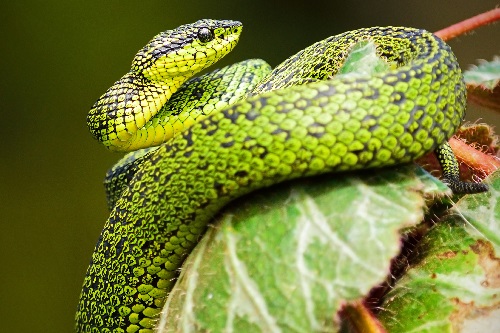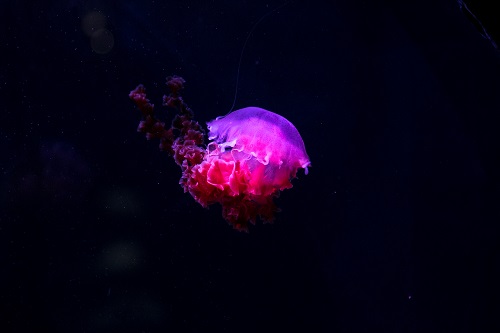It’s always dangerous searching for medical advice online. A query about a simple headache brings up alarmist horror stories about exploding brain tumours from shrill amateur surgeons.
Another search that brings alarming results is anything to do with Australia. You’ll stumble across horrific lists of giant spiders, evil snakes and aggressive jellyfish, as if every animal on the continent is out to kill, maim or otherwise upset your day.The horror stories of wicked wildlife and scorching sunshine are sure to set alarm bells ringing in the mind of any parent anxious to avoid putting their darling offspring in the danger zone.
Of course Australia is far from the lethal landscape depicted by these articles, and even when accidents or injuries do happen, the vast majority of victims receive quick and effective care. Like most other developed countries, Australians have more chance of meeting their demise in an accident involving a vending machine than a jellyfish or saltwater crocodile.
But that’s not to say a little knowledge and understanding won’t help you protect your nearest and dearest if anything should go wrong. Should your little ones be injured in Australia, here are a few tips on what to do.
Keep calm, keep thinking, keep the casualty alive
However bad the injury looks, you could make it work by panicking. This can be difficult if the casualty is a loved one, but you will be able to provide much more effective care if you can. Rather than running in and getting started, take a second to look round the scene.
A quick survey of the area may reveal the cause of injury and whether it poses a threat to yourself. You won’t be able to help the casualty if you also become a casualty so make sure it is safe for you to approach
Once you’ve done that, you need to work out what is wrong. Talk to your patient and see if they are responsive, squeeze their shoulders and see if there is a pain reaction. If they are conscious you can make them comfortable and look to treat any injury as needed.
If there’s no reply you need to quickly send for help, shout for passers-by to call 000, the emergency number of ambulances in Australia.
An unconscious patient may also be struggling to breathe, so check their mouth. Foreign material, blood or vomit could be blocking their airway. If so turn them on their side and use your fingers to pull material out of their mouth.
Next, tilt the casualty’s head back, place your ear next to their mouth and check for breathing. Listen for the sounds, look for the chest rising and falling and see if you can feel their breath on your face.
If they are breathing fine, place them in the recovery position and treat their injuries until the ambulance arrives.
If they are not breathing, you’ll need to perform Cardiopulmonary resuscitation, (CPR) sometimes also known as the ‘kiss of life’. You’ve probably seen this in films or on TV, where the casualty comes spluttering back to life and thanks the hero right away.
In the real world, this rarely happens. By breathing into the patient’s mouth and pumping their chest you will keep oxygen-rich blood pumping to their brain. Although they will remain unconscious their internal organs will be kept alive so that paramedics can use a defibrillator to ‘shock’ the heart back into a normal rhythm. Once you start performing CPR keep going until a medical professional tells you to stop or until you are physically incapable of carrying on.
To perform CPR, lay your patient on their back on a hard surface, tilt their head back and locate the hard breastbone in the middle of their chest. For an infant, use two fingers to push down to a depth of one third of the depth of the chest. For every other casualty, place one hand on top of the other, interlock your fingers and keeping your arms locked, push down to one third of the depth of the chest.
Perform thirty chest pumps in a regular rhythm, before performing two ‘rescue breaths’. If treating an infant, use your whole mouth to create a seal around the casualty’s nose and mouth before blowing steadily for one second. If treating an adult, pinch the nose and close your mouth around theirs before giving two full breaths. Keep repeating this process until medical professionals arrive.
Bites
The nightmare of being bitten by a highly venomous slithering or crawling creature is a primal fear that drives many of the horror stories about Australian wildlife. Yes the continent has more than its fair share of killer creatures, but the likelihood of being victim to one is still tiny.
Every species of venomous spider and snake has its own cocktail of chemicals that it administers when biting so it’s important to get a description of the creature and pass this on to doctors.

Snake bites can generally all be treated in the same way until an ambulance arrives. Keep the patient still and calm while you apply a broad bandage from just above the fingers or toes of the bitten limb, moving as far up the limb as possible. Wrapping the whole limb, including the bite prevents the poison from flowing through the rest of the body. Apply a splint to the limb in order to stop the patient moving the limb. Remember to write on to the bandage the time it was applied.
Spider bites are more complicated, the majority just need washing with soap and water, whilst Red-Back spider bites however should be treated with an icepack. In both cases keep an eye on the casualty and only call an ambulance if they start to feel unwell.
Funnel-Web and Mouse spider bites can be treated in the same was as snake bites and an ambulance must be called immediately.
Stings
Stings are most likely to happen at the beach, with a range of maritime creatures delivering painful injuries. Jellyfish, stingrays, shells and a variety of fish all have the ability to attack unwary feet wading through the shallows.
As with spider bites, the species involved will determine the best way of treating the injury. Blue-Ringed Octopus and Coneshell injuries should all be treated as per snake bites.
Limbs stung by Man-O-War and smaller jellyfish stings as well as those from Catfish or Crown of Thorns Starfish should be soaked in hot water until medical care arrives.

Sea anemones, tiny Irukandji jellyfish and any sting from an unknown creature can be soaked in vinegar until help arrives.
Broken Bones
Aussies love their sport, from rugby and cricket to the unfathomable Australian Rules Football. For all these active sports, the majority of injuries are caused by vehicle actions or falls.
Using the same steps listed in Tip five, ensure the casualty is safe and breathing. Before checking them over, keeping them as still as possible. Treat bleeding as necessary.
Wrap the broken limb with broad bandaging from the joint below to the join above the break. Then place a splint along the limb and secure the limb to it.
Keep checking the extremities of the limb and loosen the bandages if circulation is restricted.
Heat exhaustion
Australian summer temperatures can rocket into the 40s °C, making the risk of heat injury a real possibility for youngsters.
It’s important to recognise that there is a difference between heatstroke and heat exhaustion. Heatstroke is characterised by flushed, dry skin and a pounding rapid pulse which may cause headache and nausea leading to vomiting.
Heat exhaustion is the early stages of the internal organs overheating and as unpleasant as it can be, can be managed at home. Lie the patient down in an area of good air circulation. Remove or loosen clothing and sponge them with cool water. Seek medical help if they vomit or lose consciousness.

Heatstroke is much more serious; the internal organs are beginning to shut down. A weak, rapid pulse will be accompanied by short rapid breathing and faintness. Immediately call an ambulance and lower the casualty’s body temperature by applying ices packs to armpits, neck and groin. Cover their body with a wet sheet and give them little sips of water if they can swallow easily.
First aid is a valuable skill for everyone, we heartily recommend a training to suit your needs. A range of courses can be found through St John Ambulance Australia.
Article by Andy Scofield, Expat Focus International Features Writer

